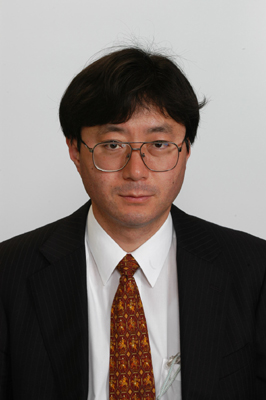Keynote Speaker
- Dr. Mitsuyuki HOSHIBA
- Japan Meteorological Agency

- Dr. Mitsuyuki Hoshiba joined Japan Meteorological Agency, JMA, after graduation from Kyoto University, Japan, and since then he has worked as a seismologist. After spending 17 months as an observer of earthquakes and volcanoes at Fukuoka branch office of JMA, he moved to Meteorological Research Institute, MRI, where he worked for 15 years as a researcher on seismic wave propagation. He received a doctorate in geophysics in 1993 from Kyoto University with a dissertation on multiple scattered seismic waves and excitation of seismic coda. He stayed for 6 months at University of Southern California for a cooperative research in 1993, and spent a year as visiting scientist at University of Munich in 1996.
- Since 2 years ago, he has worked at headquarter of JMA as a deputy director of Earthquake Prediction Information Division. In case that a large earthquake occurs anywhere in Japan, he rushes to his office and engages in issuing the information about the earthquake.
- Title of Keynote :
-
Observation of Local and Distant Earthquakes and Tsunami Warning System
- abstract---
In Japan, Japan Meteorological Agency, JMA, has the official
responsibility for the public for tsunami forecasts and issuance of
tsunami information. For the tsunami forecast the first step is precise
and prompt estimation of the location and magnitude of the earthquake
because generation of tsunami is strongly controlled by the focal depth
and the magnitude of the earthquake. In case that the location is at
sea, focal depth is shallow and magnitude is large, we should expect the
tsunami generation. For local tsunami, since JMA started its tsunami
forecast in 1952, constant efforts have been made for sophistication and
speedup of the forecast for over 50 years. The continuous improvements
enable us to issue a forecast 3 to 4 minutes at the quickest after the
occurrence of the earthquake. For distant tsunami such as ocean wide
destructive one, international cooperation of information exchange is
important. It is necessary to collect seismic waveform data in
quasi-real-time from foreign countries for the precise forecast, and sea
level data for tsunami observation. For both local and distant cases, it
is important to keep the seismic observation network and analyzing
system well maintained for reliable tsunami forecast.

![[DSN logo]](img/DSN2005_Logo.jpg) The International Conference on Dependable Systems and Networks
The International Conference on Dependable Systems and Networks![[IEEE logo]](img/MBblue_s.gif)
 hal.rcast.u-tokyo.ac.jp>
hal.rcast.u-tokyo.ac.jp>